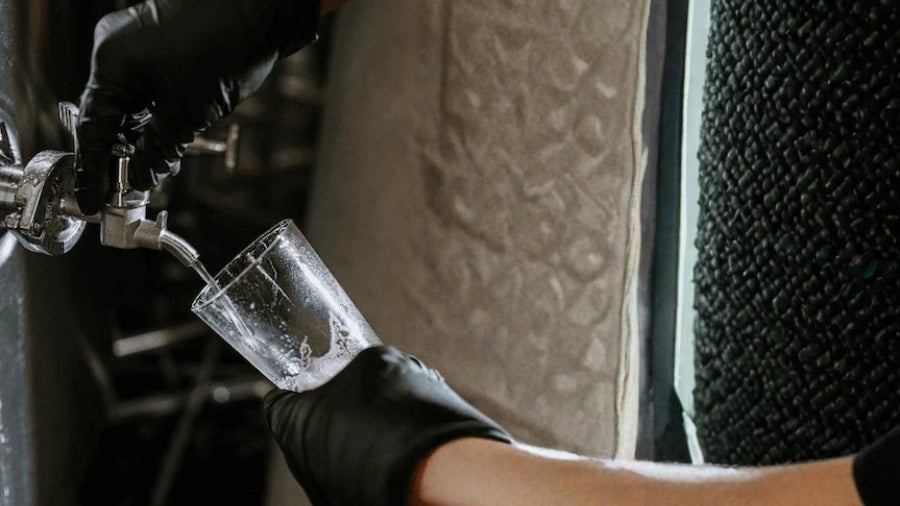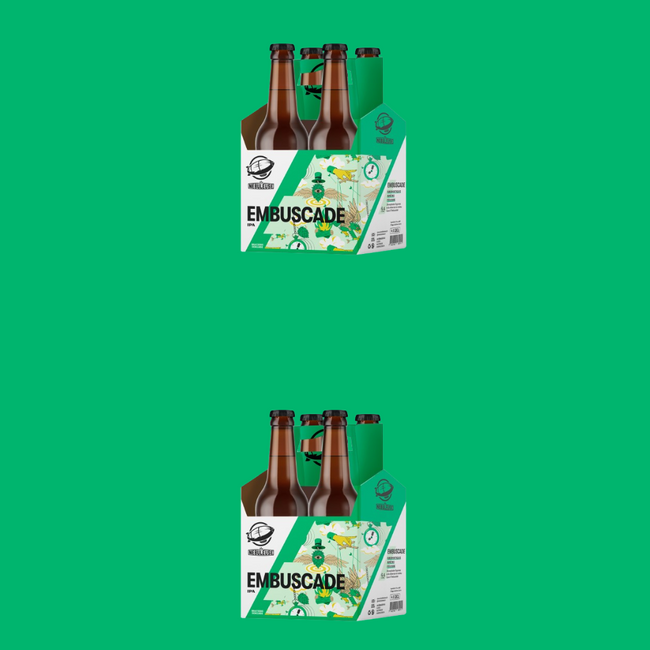When beer returns to spontaneous fermentation

Spontaneous fermentation is making a comeback in the world of craft beer. This age-old technique, which nearly disappeared with the rise of industrial breweries, is now making a strong comeback in the craft world. And frankly, it's a joy to see.
As we explored in our article on How fermentation temperature influences the character of your beer , the conditions in which the yeasts work fundamentally determine the taste profile of the final product. Spontaneous fermentation takes this logic even further by completely relinquishing control over the microorganisms that will transform the wort into beer.
What makes this method so special? Its simplicity and boldness. The process is straightforward: the wort is allowed to cool in the open air, and the yeasts and bacteria naturally present in the environment take care of fermentation. No added yeasts, no absolute control—just trust in nature and its timing.
Spontaneous Fermentation: A Journey Through Brewing History and Traditions
The origins of an essential brewing art
In reality, spontaneous fermentation is not a new technique , but rather a return to the roots. The first beers in history all fermented this way, simply because yeasts were unknown until Pasteur's discoveries in the 19th century.
Brewers of the past didn't understand exactly why their wort turned into beer, but they noticed that the process worked better in certain seasons and locations. They passed this empirical knowledge down from generation to generation, unwittingly creating the first brewing terroirs.
The advent of pure-culture yeasts in the 1880s revolutionized the world of beer. Precisely controlling fermentation allowed for the industrialization of production, but also standardized flavors. Spontaneous fermentation then became the exception rather than the rule.
Belgium, guardian of the flame
If you're looking for the world epicenter of spontaneous fermentation, head to Belgium, and more specifically the Pajottenland region, near Brussels. This is where lambic, the iconic spontaneously fermented beer, has developed and survived over the centuries.
The Belgian climate plays an important role in this story. Winters are cold enough to limit the growth of unwanted bacteria, but not so harsh as to inhibit the activity of good wild yeasts. Traditional producers like Cantillon, 3 Fonteinen, and Lindemans still brew using old-fashioned methods, with open cooling tanks (koelschip) and endless patience.
Lambic comes in many forms: pure, barrel-aged (oude lambiek), blended from several vintages (gueuze), or enriched with fruit (kriek with cherries, raspberry with raspberries). Each variation offers a different taste experience, but always marked by a refreshing acidity and unique complexity.
Preserving unique know-how
In the 1970s, spontaneous fermentation seemed doomed to disappear in the face of the standardization of tastes. A few resistant brewers continued to practice this technique out of conviction, becoming the guardians of an endangered brewing heritage.
The renaissance of craft breweries has fortunately reversed this trend. Curious brewers around the world are now rediscovering these traditional methods and adapting them to their local environments. This new wave builds on traditions while evolving them, proving that innovation can also come from rediscovering the past.
In 2019, UNESCO's recognition of lambic brewing techniques as intangible cultural heritage confirmed the importance of preserving these methods. Beyond a simple production technique, this showcases an entire aspect of brewing history and culture.
Belgian inspiration in modern brasseries
The influence of Belgian traditions shines through in many craft breweries today. Even without practicing spontaneous fermentation in the strict sense, many are inspired by its aromatic profiles and philosophy.
This is the case with Estafette , La Nébuleuse's Belgian triple. With its fruity aromas of banana and apricot, complemented by notes of caramel, malt, and spices, this beer pays homage to the art of Belgian brewing. Brewed with a specific WLP 530 yeast, it captures the essence of traditional Belgian triples while providing a contemporary interpretation.
The scientific magic behind unique flavors
From koelschip to bottle: the process revealed
Spontaneous fermentation begins with a relatively conventional mash. The major difference comes in the cooling phase. Instead of using a closed heat exchanger, brewers pour the hot wort into a large, shallow tank called a koelschip (or coolship in English).
This tank, traditionally made of copper, is placed under brewery roofs, often near windows or shutters open to the outside. During the night, the wort cools and is exposed to microorganisms in the air. This is when the magic happens: dozens of different species of yeast and bacteria settle in the liquid and begin fermentation.
Once inoculated, the must is transferred to oak barrels that will host a long and complex fermentation. Unlike a traditional fermentation that lasts a few days or weeks, this one extends over several months, even years. During this period, different microorganisms work successively, creating a constant evolution of aromas and flavors.
Invisible actors: microorganisms and terroir
Spontaneous fermentation involves an impressive diversity of microorganisms. It includes, of course, Saccharomyces yeasts (the same as in conventional fermentation), but also Brettanomyces, lactic acid bacteria such as Pediococcus and Lactobacillus, and sometimes even Candida or Pichia yeasts.
This microbial community varies by region, season, and even brewery. This is why these beers are often referred to as terroir—a concept usually reserved for wine. The production site leaves its mark, even on the microscopic elements that contribute to fermentation.
In Belgium, some century-old breweries boast unique microbial ecosystems that have developed over the decades within their walls, barrels, and surrounding air. These specific cultures constitute a living heritage as valuable as the recipes themselves.
Climate also plays a role that should not be overlooked. Traditional spontaneous fermentation is only possible during the cold months (usually October to April), when nighttime temperatures are low enough to cool the wort and when unwanted bacteria are less present in the air.
Taste alchemy: where do these unique flavors come from?
The exceptional aromatic profiles of spontaneously fermented beers are explained by this microbial diversity and the duration of the process. Each type of microorganism contributes its own notes:
-
Saccharomyces provides the classic fermentation aromas (fruity, spicy)
-
Brettanomyces creates characteristic notes often described as "funky," reminiscent of leather, hay, or very ripe fruit.
-
Lactic bacteria generate acidity and notes of yogurt, lemon or green apple
-
Other microorganisms add additional nuances, sometimes floral or earthy
This complexity is amplified by barrel aging, where the wood releases its tannins and allows for micro-oxygenation that gradually transforms the flavors. After months or years, the result is a beer with multiple aromatic layers, refreshing acidity, and a depth rarely achieved in other styles.
The perfect balance of acidity, bitterness, and residual sweetness makes these beers excellent food companions. Their complexity allows for surprising beer-food pairings, from cheeses to desserts to spicy dishes where their acidity plays a refreshing role.
Conclusion: A living legacy that continues to inspire
Spontaneous fermentation reminds us of something essential: even in our ultra-technological age, some things cannot be rushed or completely controlled. These beers invite us to rediscover patience, observation, and the acceptance of a certain form of unpredictability.
The renewed interest in these traditional techniques reflects a shift in our relationship with craftsmanship and authenticity. By seeking to rediscover the flavors of yesteryear, we are ultimately returning to the very essence of beer: a living beverage, intimately linked to its environment and the expertise of those who produce it.









